Bodegón
Dead Nature
El "Bodegón o "Naturaleza Muerta", es un género artístico el cual consiste en representar objetos que pueden ser naturales tales como frutas, comidas, flores, entre otras, y objetos creados por el hombre, como utensilios de cocina, adornos, libros, joyas, pipas, antigüedades, entre otros, en un espacio cerrado, aprovechándose de el reducido espacio de la composición para armonizar perfectamente las luces, matices e iluminaciones. El clímax de la popularidad de este género artístico tuvo lugar en el siglo XVII, época en la cual este tipo de obras por lo general contenían simbología religiosa o alusión a objetos religiosos.
En las tumbas del Antiguo Egipto ya había algunas obras de Naturaleza Muerta adornando las paredes, en esta civilización se creía que los objetos o pinturas relacionadas con el hogar y la comida se harían reales en la otra vida quedando a disposición para que los muertos hicieran uso de ellas. Este tipo de pinturas también se encontraron en la Antigua Grecia, estos con un aspecto mas realista. En la edad media, a partir del año 1300, el bodegón se incluyó en las pinturas con temática religiosa, siendo representadas acompañando a figuras humanas que resaltaban como protagonistas, casi siembre envueltas en misticismo y simbolismo religioso muy detallado.
En el siglo XVI este género artístico se vio desligado de la temática religiosa, por influencia del mismo Leonardo da Vinci quien creó estudios a la acuarela de la fruta por el año 1495, y de Alberto Durero, quien creó dibujos bastante detallados de flora y fauna, entre algunos otros artistas, como Jacopo de' Barbadi, quien creó el Bodegón con perdiz, guanteletes y flechas de ballesta en el 1504, con referencias religiosas casi nulas, siendo esta obra una de las primeras en ser datadas y firmadas.
En siglo XIX, con el nacimiento de las academias de arte europeas, el bodegón comenzó a perder popularidad, estableciéndose así una "jerarquía de los géneros" la cual posicionaba a la pintura de historia (la cual representa escenas históricas, mitológicas o religiosas) siguiendo en la lista las escenas de género (escenas de la vida cotidiana) el retrato, el paisaje y por último el bodegón. Sin embargo en este siglo muchos de los mas grandes artistas incluyeron el bodegón entre sus obras, como Francisco Goya, Eugène Delacroix, Gustave Courbet. Y con el auge de la pintura impresionista y postimpresionista, el bodegón recuperó su popularidad, evolucionando junto a las nuevas corrientes artísticas, siendo los artistas mas destacados de esta época Claude Monet, Vincent Van Gogh, Pierre-Auguste Renoir, Gustave Caillebotte, entre otros.
The "Bodegon" or "Dead Nature", is an artistic genre which consists of representing objects that can be natural such as fruits, foods, flowers, among others, and objects created by man, such as kitchen utensils, ornaments, books, jewelery, pipes, antiques, among others, in a closed space, taking advantage of the reduced space of the composition to perfectly harmonize the lights, nuances and illuminations.The climax of the popularity of this artistic genre took place in the 17th century, which this type of works usually contained religious symbology or allusion to religious objects.
In the tombs of Ancient Egypt there were already some works of Still Life adorning the walls, in this civilization it was believed that the objects or paintings related to the home and the food would become real in the other life being available for the dead to make use of of them. This type of paintings were also found in Ancient Greece, these with a more realistic look. In the middle ages, from the year 1300, the still life was included in the paintings with religious themes, being represented by accompanying human figures that stood out as protagonists, almost always wrapped in mysticism and very detailed religious symbolism.
In the sixteenth century this artistic genre was separated from the religious theme, by the influence of Leonardo da Vinci himself who created watercolor studies of the fruit by the year 1495, and Alberto Durero, who created quite detailed drawings of flora and fauna , among some other artists, such as Jacopo de 'Barbadi, who created the Bodegón with partridge, gauntlets and crossbow arrows in 1504, with almost null religious references, this work being one of the first to be dated and signed.
In the 19th century, with the birth of the European art academies, the still life began to lose popularity, establishing a "hierarchy of genres" which positioned the history painting (which represents historical, mythological or religious scenes) following in the list the scenes of genre (scenes of everyday life) the portrait, the landscape and finally the still life. However in this century many of the greatest artists included the still life among his works, such as Francisco Goya, Eugène Delacroix, Gustave Courbet. And with the rise of Impressionist and Post-Impressionist painting, Bodegón regained its popularity, evolving along with the new artistic currents, being the most outstanding artists of this era Claude Monet, Vincent Van Gogh, Pierre-Auguste Renoir, Gustave Caillebotte, among others .
El Proceso
The process
Los bocetos en este tipo de pinturas por lo general es bastante sencillo, lo que es complicado es la composición, calcular tamaños, formas, adecuar el espacio para cierta cantidad de objetos, sin embargo esta pintura no es tan complicada, solo se encuentran tres elementos en el primer plano acompañadas de un fondo oscuro y una superficie que da la impresión de ser una tela, comencé a pintar la botella de whisky, la cual es la mas pequeña, la etiqueta del cuello de la botella contiene una mezcla entre azules, negros grises y blancos los cuales le dan un toque de transparencia muy sutil.
The sketches in this type of paintings is usually quite simple, what is complicated is the composition, calculate sizes, shapes, adapt the space for a certain amount of objects, however this painting is not so complicated, only three elements are found in the foreground accompanied by a dark background and a surface that gives the impression of being a fabric, I began to paint the bottle of whiskey, which is the smallest, the label on the neck of the bottle contains a mixture of blue, black gray and white which give a touch of transparency very subtle.
El cuerpo de la botella fue un poco mas complicado, en esta zona se mezclan colores amarillo, siena, terracota, marrón, naranja, negro y blanco, las transparencias son bastante marcadas, y además debí dejar algunas zonas en blanco para las iluminaciones mas fuertes.
The body of the bottle was a bit more complicated, in this area yellow, siena, terracotta, brown, orange, black and white are mixed, the transparencies are quite marked, and I also had to leave some areas blank for the strongest illuminations
El mismo proceso apliqué en la botella mas grande, con una tonalidad mas clara, usando un poco mas el color amarillo, y en la etiqueta una mezcla de amarillo, siena, negro y blanco, marcando muy suavemente el color para que la sombra fuera bastante sutil, y por ultimo pinté las letras y el logo central de la botella.
The same process I applied on the larger bottle, with a lighter shade, using a little more yellow color, and on the label a mixture of yellow, sienna, black and white, marking very softly the color so that the shadow was quite subtle, and finally I painted the letters and the central logo of the bottle.
Para finalizar pinté la pequeña copa que se ubica al frente, con colores gris, siena, blanco y negro, dejando una zona totalmente en blanco para la iluminación mas fuerte, luego procedí a pintar el fondo, bastante oscuro para resaltar el brillo y los colores de las botellas, aplicando algunas zonas de pequeñas luces con el color terracota, y por último pinté la tela de la zona inferior con colores azul, blanco, negro y tan.
To finish I painted the small glass that is placed in the front, with gray, siena, black and white colors, leaving an area completely blank for the strongest lighting, then I proceeded to paint the background, quite dark to highlight the brightness and colors of the bottles, applying some areas of small lights with the terracotta color, and finally I painted the fabric of the lower area with blue, white, black and tan colors.
La Obra Finalizada
THe Finished Artwork
“La esencia de todo arte hermoso, de todo gran arte, es la gratitud”
"The essence of all beautiful art, all great art, is gratitude."
Friedrich Nietzsche
No olvides dejar un Upvote y seguirme si quieres ver mas trabajos así.
Do not forget to leave an Upvote and follow me if you want to see more works like that.
Escucha esta canción | Listen to this song
Y por cierto...¡Feliz cumpleaños a mi!
And by the way... Happy birthday to me!
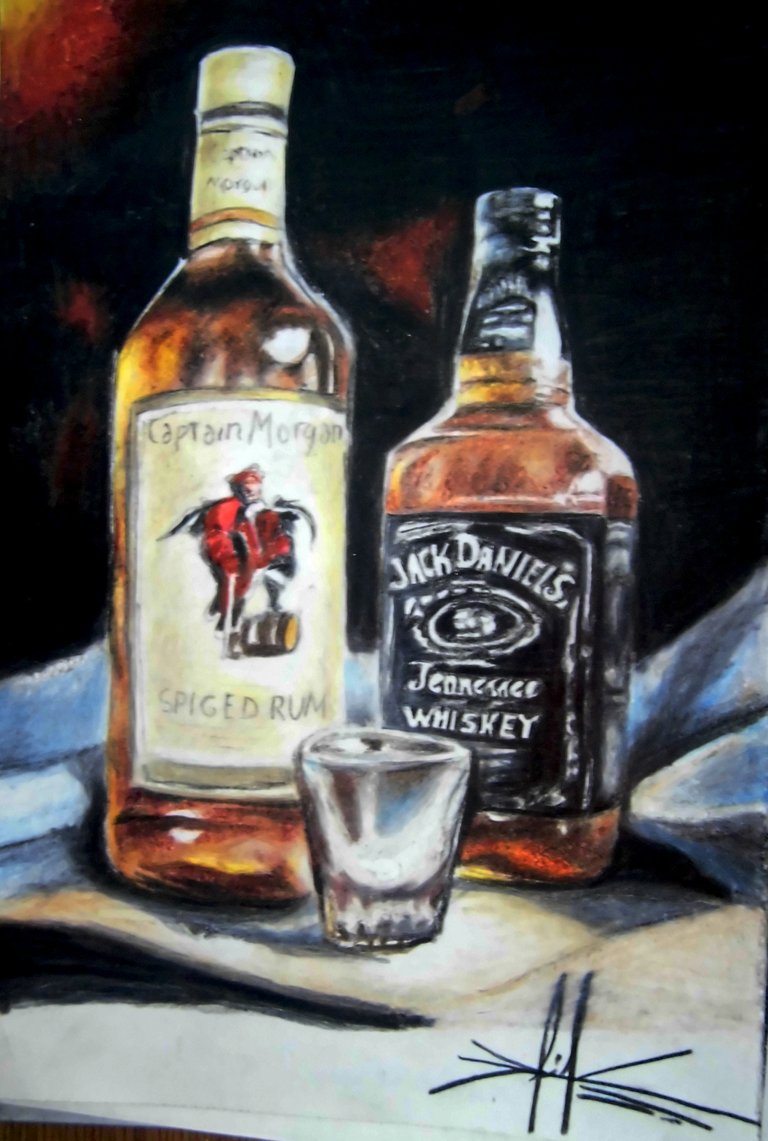
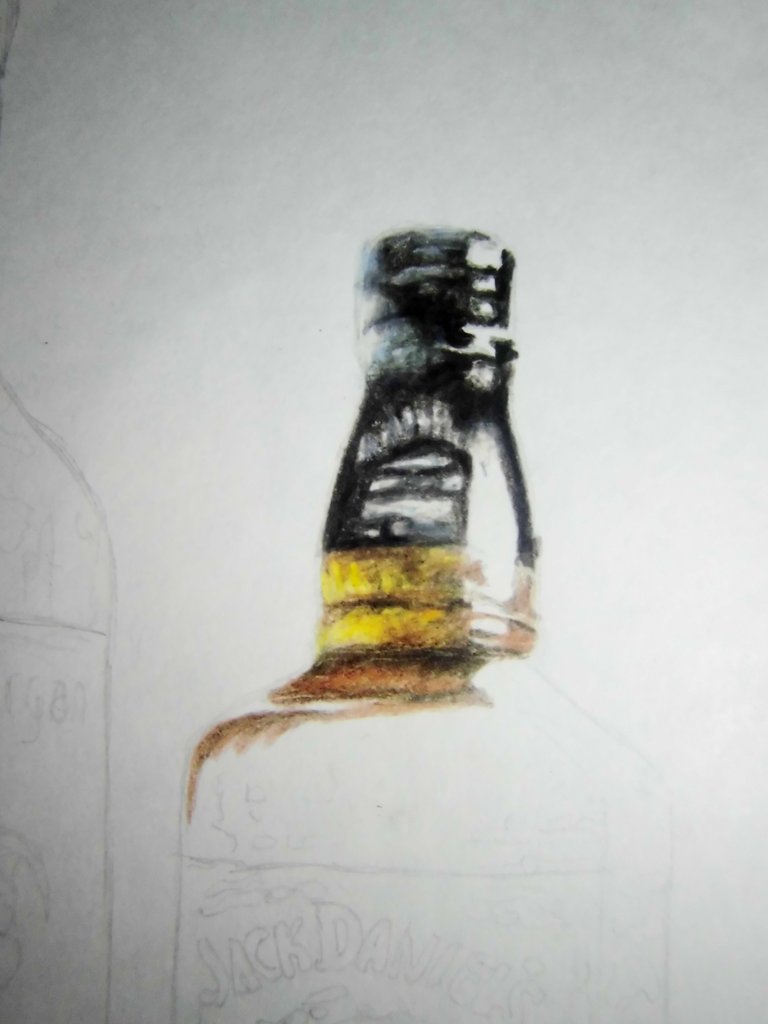
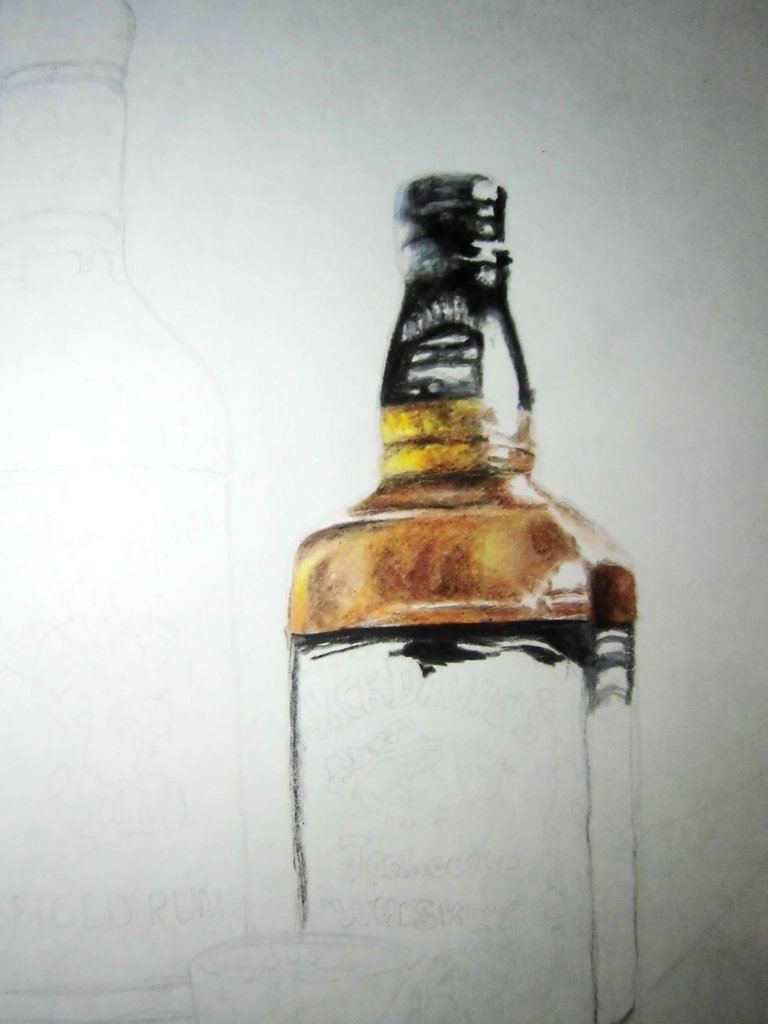
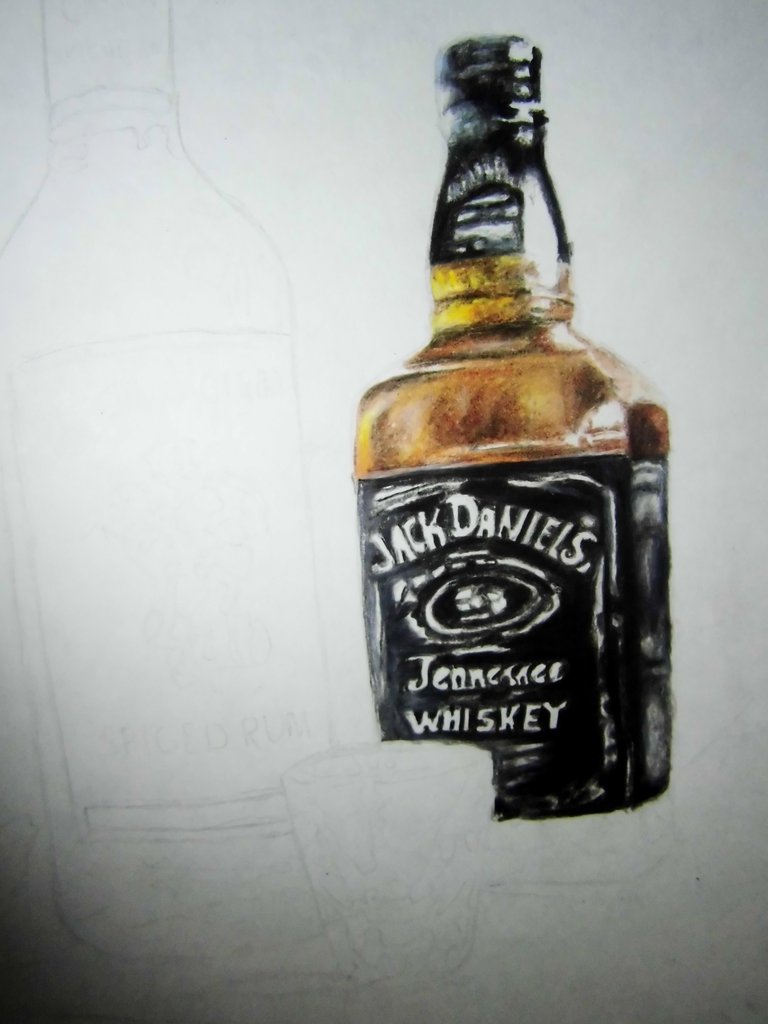
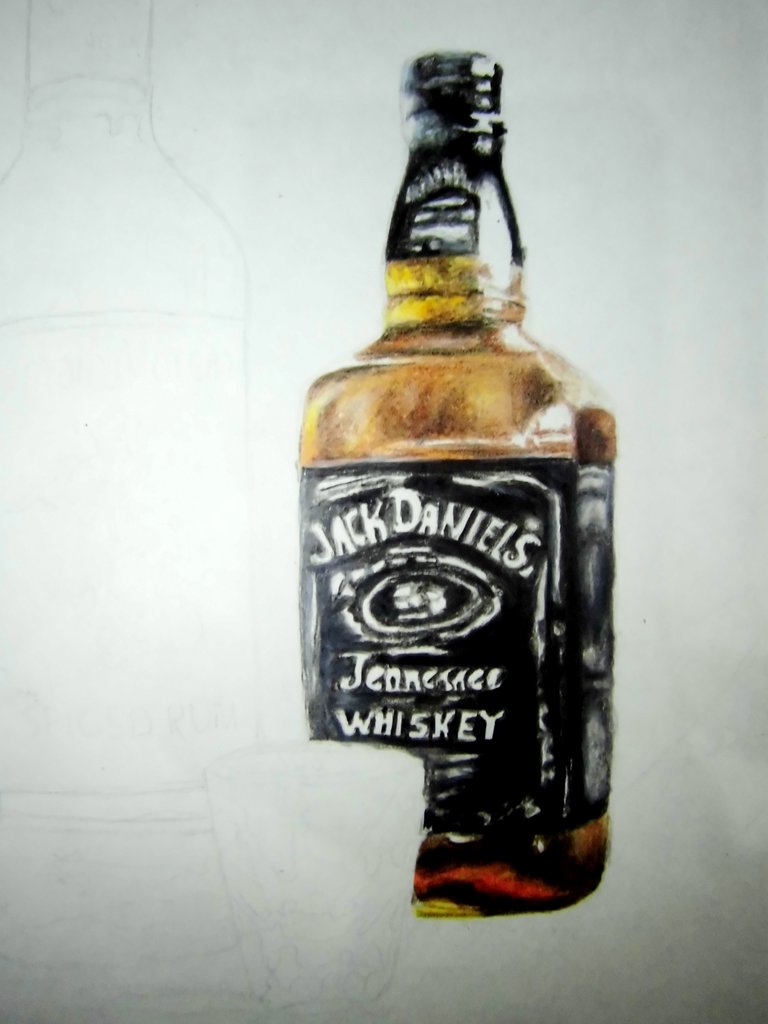
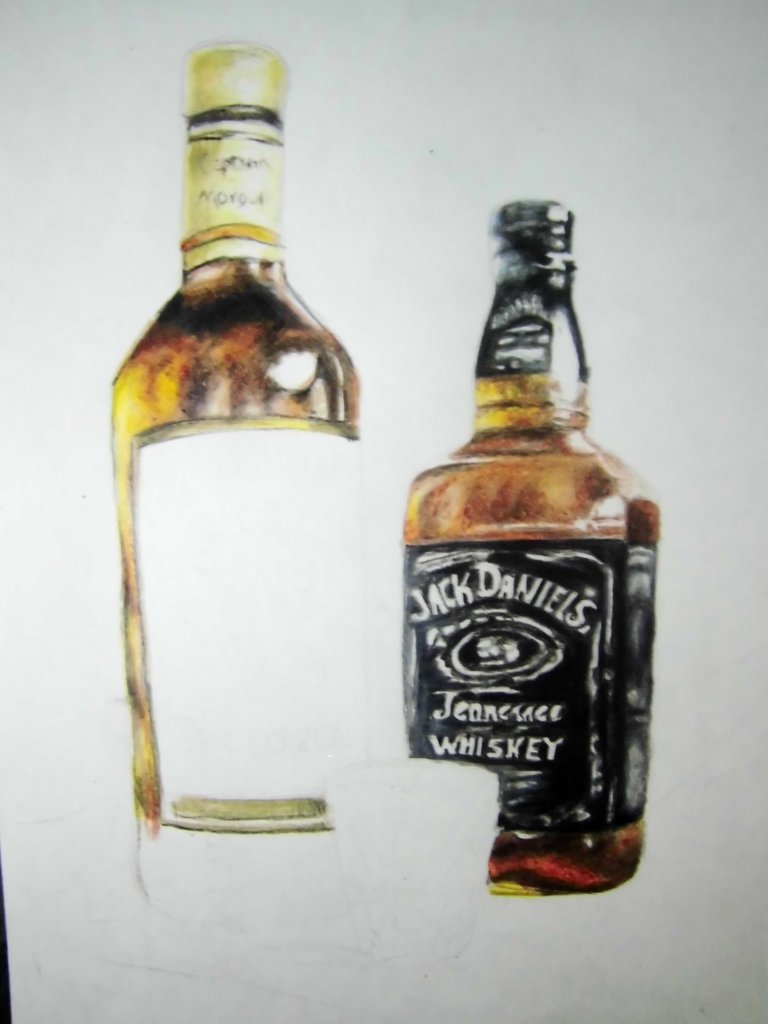
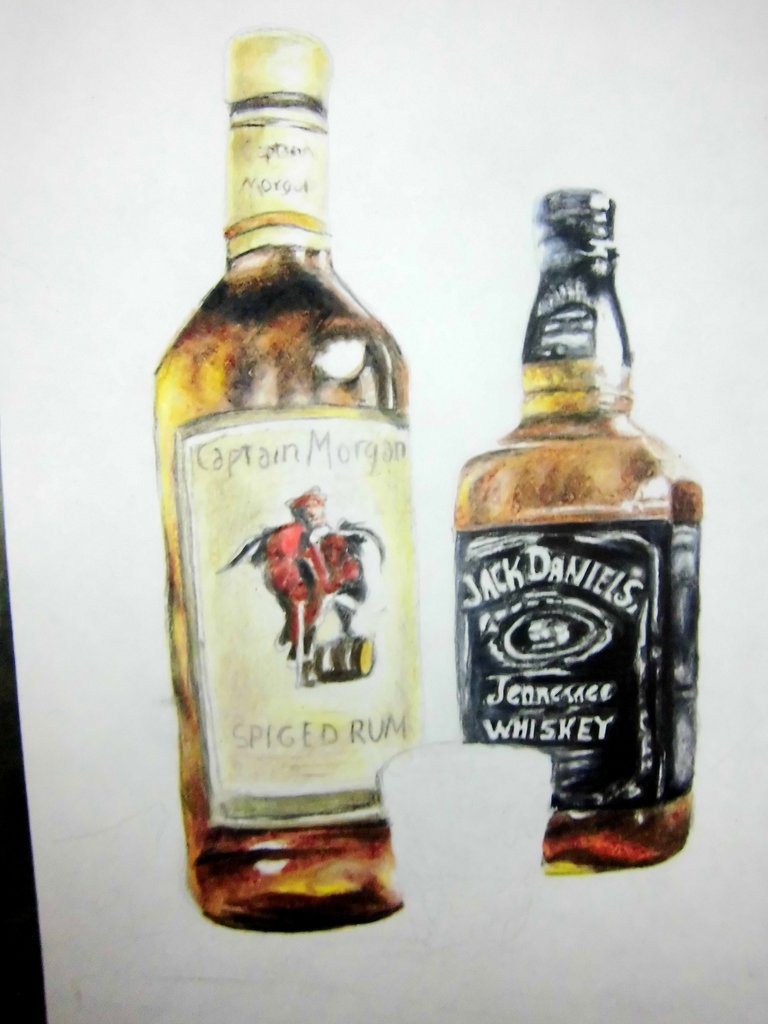
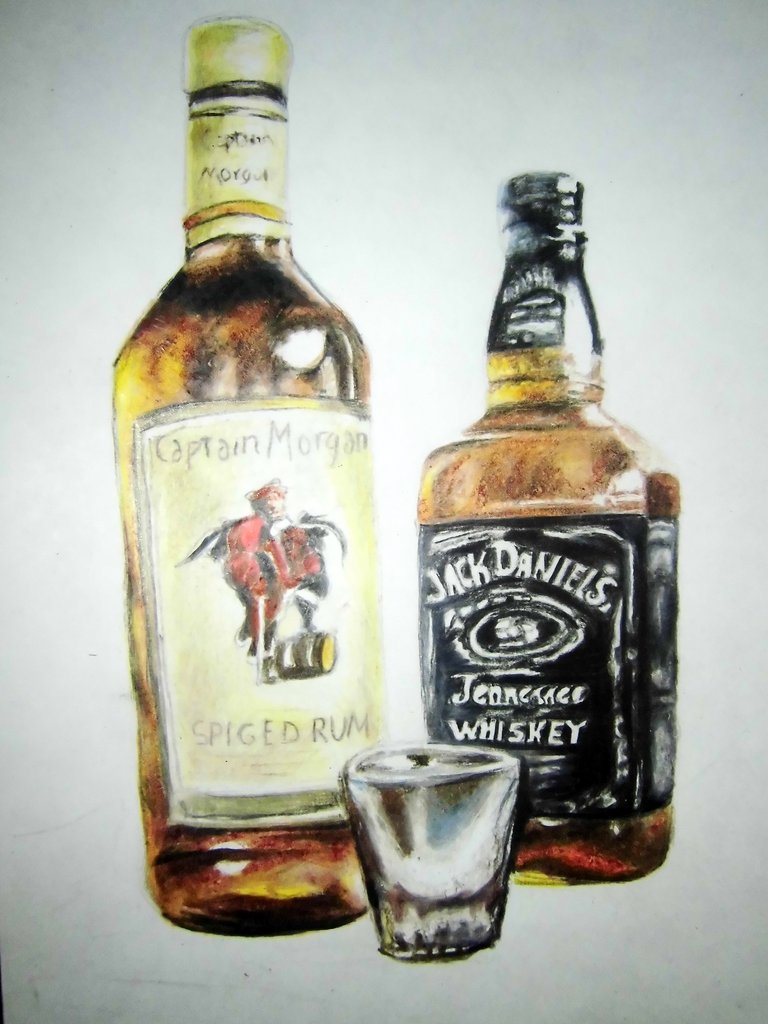
Tienes un increíble talento! Felicidades! Sigue así y serás grande!
Extraordinario trabajo, es un placer leeerte y apreciar no solo tu obra sino también la riqueza de contenido. Felicitaciones.
Muchas gracias!
Gracias!